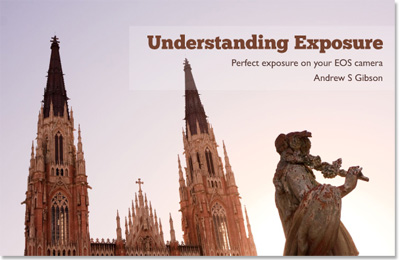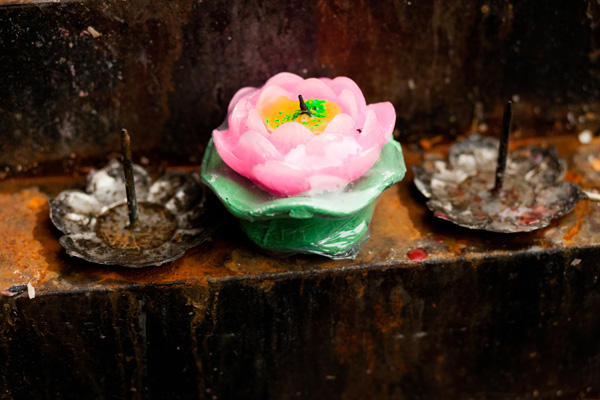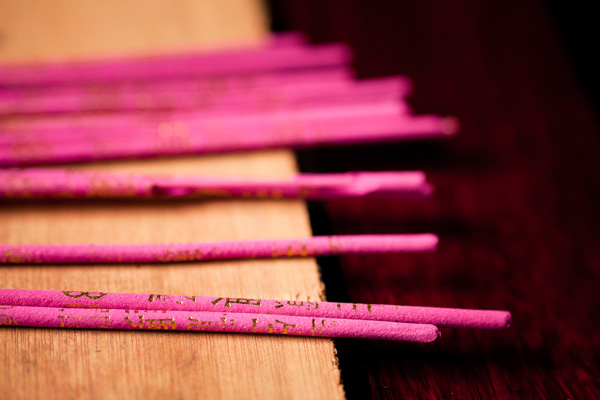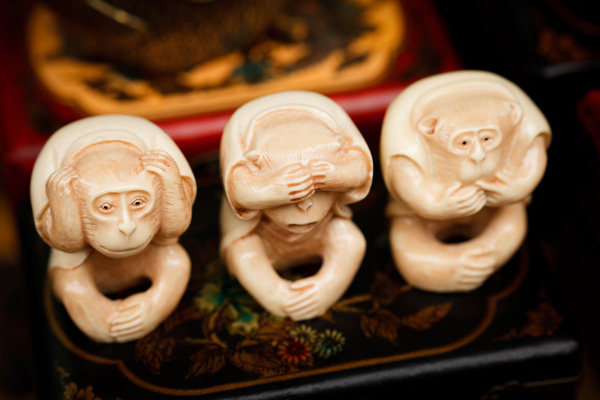Behind the photos

I took this photo several years ago in the city of La Plata in Argentina. The gothic cathedral is the largest cathedral in the Americas and took around 100 years to build. They only finished it 20 years ago. It illustrates the concept of exposure perfectly, as the church and statue are backlit by the setting sun – a challenging situation when it comes to deciding the optimum exposure.


I recently spent six months in Shanghai, China – some of the photos I took on that trip appeared in the book. These two photos were taken in Lingyin Temple in Hangzhou. The main attraction in this city is West Lake – a beautiful lake surrounded by low hills, forests and ancient temples.
Both photos are close-ups – I used an 85mm lens on my EOS 5D Mark II fitted with a 500D close-up lens. That’s a +2 diopter close-up lens (or filter) that lets me get closer to the subject. I like this style because it lets me concentrate on details like the incense sticks and candle.

I took this photo of the three monkeys at Dongtai Road Antiques Market in Shanghai. Dongtai Road is a narrow street lined with market stalls and shops. The guides say around half of the stuff sold there is fake – but there are lots of genuine items there too if you know how to find them. I don’t – but as my interest is in taking photos, not buying antiques, all I cared about is whether they were photogenic. The market stalls holders were friendly and not as pushy as I expected, and happy for me to take photos.
The Idea
Writing the body of the book was the easy part – it only took a few days. The hard part was planning what to write about and then finding good photos to illustrate it. Caption writing, diagram creation, putting tables together and fact checking all take a lot longer. I rewrote the first draft several times until I was happy with it. The book also had to be designed, which I did myself with Adobe InDesign.
I got the idea for ‘Understanding Exposure: Perfect Exposure on Your EOS Camera‘ after reading a couple of books about exposure. One was meant to be for digital cameras but had clearly been originally written some time ago and the author hadn’t taken the differences between film and digital cameras into account. The other book divided exposure into around 12 exposure scenarios, and I thought that overcomplicated things.
I started thinking about simplifying the topic of exposure, and came up with three basic exposure scenarios which cover any situation a photographer will encounter.
I also thought about the differences between film and digital cameras. Part of the reason people get confused about exposure is because digital sensors react to light differently than film. Photographers who learned their craft with film have to relearn many of the basic principles. Of course, now that digital technology has matured there are many photographers who have never used film cameras, and I took care to ensure that the book is just as relevant to them.
These ideas are the heart of the book. I also decided to make it EOS specific. It meant that I could go deep and explain to EOS camera owners what the various metering and exposure modes do on their cameras. That separates it from generic books about exposure. It’s the second in a series that will develop into a comprehensive library of books about the EOS system.
Download the eBook Now for only £7
–
Andrew S Gibson is a freelance writer and photographer. He is the Technical Editor of EOS magazine and writes for photography websites, magazines and book publishers.
Leave a Reply